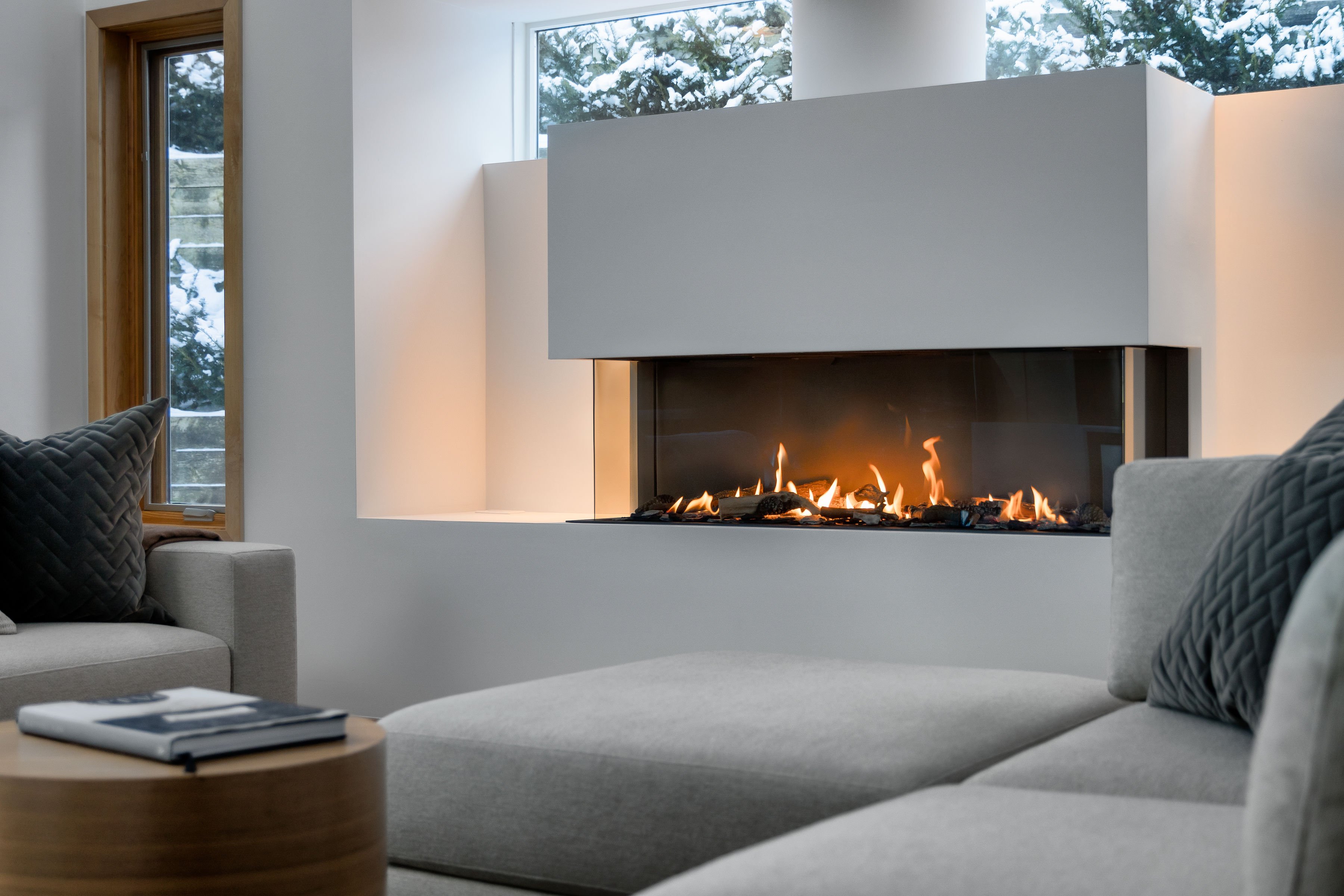The Importance of Choosing Non-Combustible Framing for Fireplace Walls

Discover the crucial role of non-combustible framing materials in ensuring safety and compliance when constructing walls around contemporary prefabricated gas and wood burning fireplaces.
Understanding the Risks of Combustible Framing
When it comes to constructing walls around modern prefabricated gas and wood burning fireplaces, it is important to understand the risks associated with using combustible framing materials. Combustible materials, such as wood and sheetrock are not considered "non-combustible" and may contribute to the spread of flames in case of a fireplace-related incident.
Using combustible framing materials compromises the safety of the building and its occupants. In the event of a fire, the walls surrounding the fireplace act as a barrier to prevent the flames from spreading to other areas of the building. However, if these walls are constructed using combustible materials, they cannot withstand the heat radiating from the fireplace which may cause finishing materials to bend or crack.
Therefore, it is crucial for professionals in the commercial construction field to recognize the potential risks of using combustible framing materials and to opt for non-combustible alternatives.
The Benefits of Non-Combustible Framing Materials
Non-combustible framing materials offer numerous benefits when it comes to constructing walls around gas and wood burning fireplaces. Firstly, these materials are designed to resist fire and prevent the spread of flames. They have a higher melting point or R value and do not contribute to the fuel load, making them an excellent choice for ensuring the safety of the building and its occupants.
Additionally, non-combustible framing materials have a longer lifespan compared to combustible materials. They are more resistant to decay, pests, and moisture, which can greatly enhance the durability and longevity of the fireplace walls.
Moreover, non-combustible materials are often easier to work with during the construction process. They are available in various forms, such as metal studs and non-combustible building board, and can be customized to meet specific design requirements. This flexibility allows professionals to create sturdy and reliable walls that comply with building codes and safety standards.
Meeting Building Codes and Safety Standards
In the commercial construction field, it is essential to adhere to building codes and safety standards to ensure the structural integrity and safety of the building. When it comes to constructing walls around gas and wood burning fireplaces, using non-combustible framing materials is often a requirement.
Building codes and safety standards specify the minimum fire resistance rating for walls surrounding fireplaces. These ratings determine the amount of time the walls can withstand exposure to heat before failing. Non-combustible framing materials, such as steel studs and non-combustible building board, are designed to meet these fire resistance requirements and help professionals ensure compliance with the codes and standards.
By choosing non-combustible framing materials, professionals can confidently meet building codes and safety standards, providing a safe environment for building occupants.
Choosing the Right Non-Combustible Framing Material
Selecting the appropriate non-combustible framing material is crucial for the successful construction of walls around gas and wood burning fireplaces. Different materials have varying properties and advantages, and it is important to consider the specific requirements of each project.
One common choice for non-combustible framing is metal studs, which offer excellent fire resistance and durability. Metal studs are lightweight, easy to install, and provide structural stability. Another option is concrete blocks, brick, stone or light weight calcium silicate board which are known for their exceptional strength and fire-resistant properties.
It is recommended to consult with experts in the commercial construction field to determine the most suitable non-combustible framing material based on factors such as fire resistance ratings, cost-effectiveness, and design considerations. By making an informed decision, professionals can ensure the longevity, safety, and compliance of the fireplace walls.
Best Practices for Installing Non-Combustible Framing
Installing non-combustible framing materials requires following best practices to ensure proper construction and maximize the safety of the fireplace walls. Here are some key guidelines to consider:
1. Consult the manufacturer's instructions and guidelines for the chosen non-combustible framing material to understand the proper installation techniques and requirements of the fireplace you are installing.
2. Ensure proper spacing and alignment of the framing members to create a sturdy and stable structure. Consult the "cut sheet" and the fireplace manual for distances to combustible requirements.
3. Use appropriate fasteners and connectors designed for non-combustible materials to ensure secure connections and prevent any potential hazards.
4. Pay attention to firestopping and insulation requirements to maintain the fire resistance of the walls.
5. Regularly inspect and maintain the fireplace walls to identify any signs of damage or deterioration that may compromise their fire resistance capabilities.
By following these best practices, professionals can ensure the successful installation of non-combustible framing materials and contribute to the overall safety and compliance of the fireplace walls.
Our lightweight Skamotec 225 building board makes framing around your fireplace fast, easy and safe. Click on this link to find our more.

